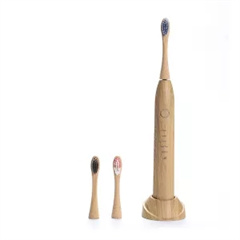1. Age and Size: Choose a toothbrush appropriate for your child’s age. Toothbrushes are often categorized by age groups, such as infant, toddler, and child. Ensure the toothbrush head is small enough to fit comfortably in their mouth and reach all their teeth.
2. Soft Bristles: Opt for toothbrushes with soft bristles. These are gentle on sensitive gums and tooth enamel, preventing any potential damage.
3. Child-Friendly Design: Look for toothbrushes with fun colors, patterns, and designs that your child will find appealing. Many toothbrushes feature popular characters from cartoons or movies.
4. Grip and Handle: Choose a toothbrush with an ergonomic and nonslip handle. This makes it easier for your child to hold and control the toothbrush while brushing.
5. Manual or Electric: Decide whether a manual or electric toothbrush is suitable for your child. Electric toothbrushes can make brushing more exciting and efficient, especially for kids who may not brush as thoroughly with a manual brush.
6. ADA Seal of Approval: Ensure that the toothbrush carries the American Dental Association (ADA) seal of approval. This indicates that the toothbrush has met safety and effectiveness standards.
7. Replaceable Heads (for Electric Toothbrushes): If you opt for an electric toothbrush, consider one with replaceable brush heads. This way, you can change the brush head without having to replace the entire toothbrush.
8. Built-In Timer: Some electric toothbrushes have built-in timers to ensure your child brushes for the recommended two minutes. This feature can help instill good brushing habits.
9. Comfort and Preference: Involve your child in the decision-making process. Let them choose a toothbrush they like, as this can increase their enthusiasm for brushing.
10. Specialty Brushes: If your child has specific dental needs, such as braces, there are specialized toothbrushes designed to clean around orthodontic appliances.
11. Consider Allergies and Sensitivities: If your child has allergies or sensitivities, ensure that the toothbrush materials are safe for them to use.
12. Replace Regularly: Replace the toothbrush every three to four months, or sooner if the bristles are worn. This ensures effective cleaning.
13. Supervision and Demonstration: Teach your child proper brushing techniques and supervise them until they can brush independently.
14. Make It Fun: Turn brushing into an enjoyable routine. Use toothpaste with appealing flavors, play music, or create a brushing chart with rewards.
15. Regular Dental Check-ups: Regular visits to the dentist are essential to monitor your child’s oral health and address any concerns.
Remember that finding the best toothbrush might require some trial and error to discover what works best for your child. The key is to make brushing a positive experience that contributes to their overall dental hygiene.








